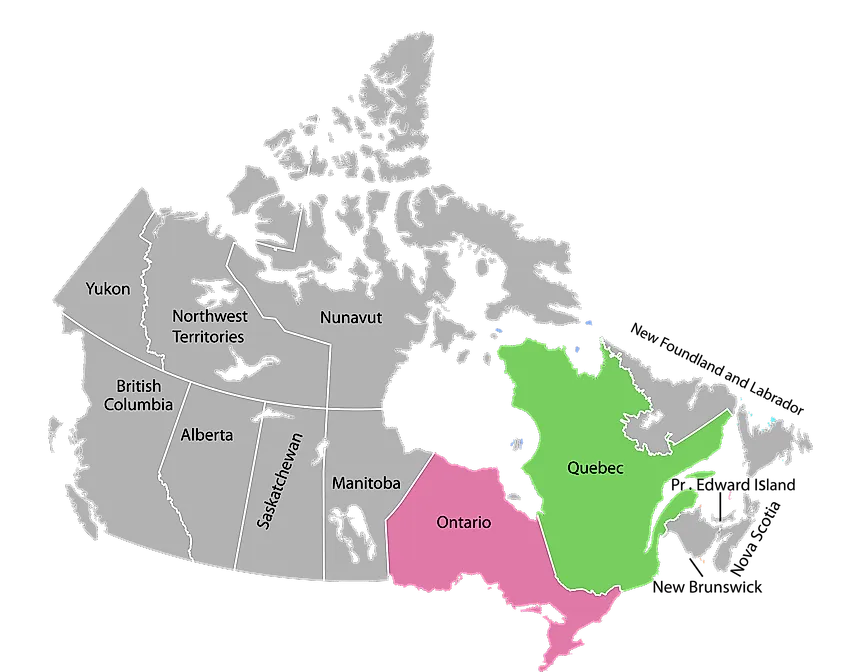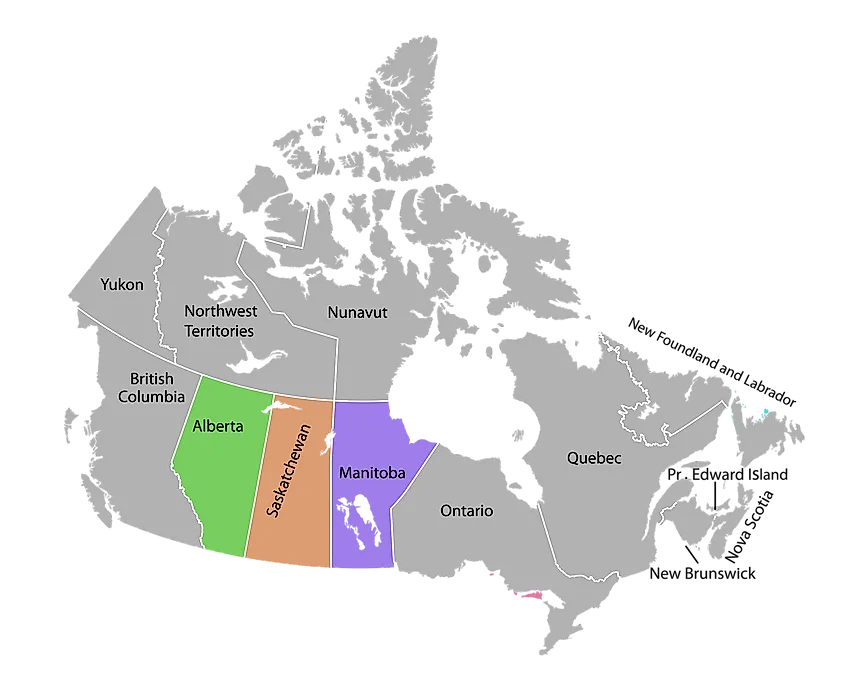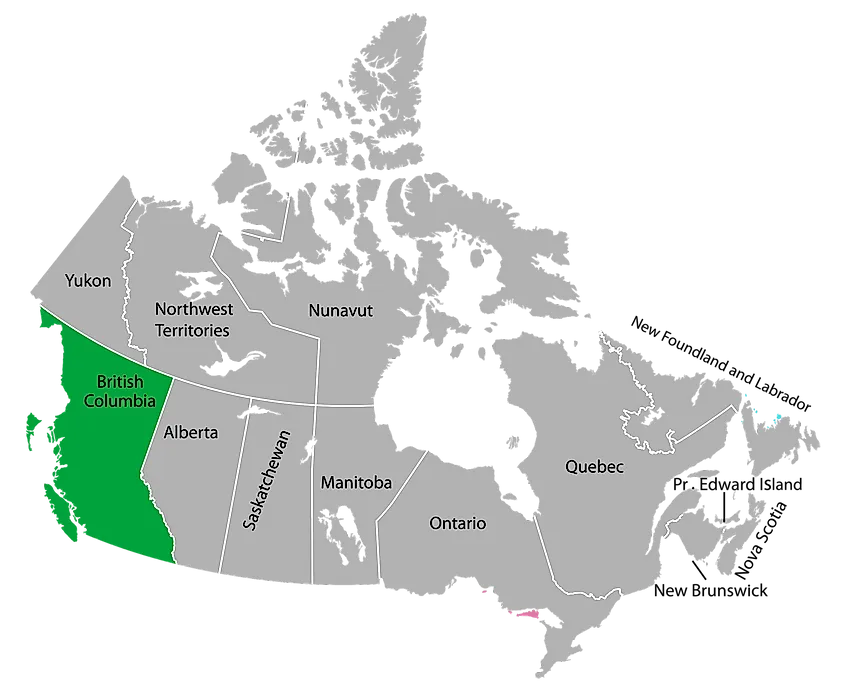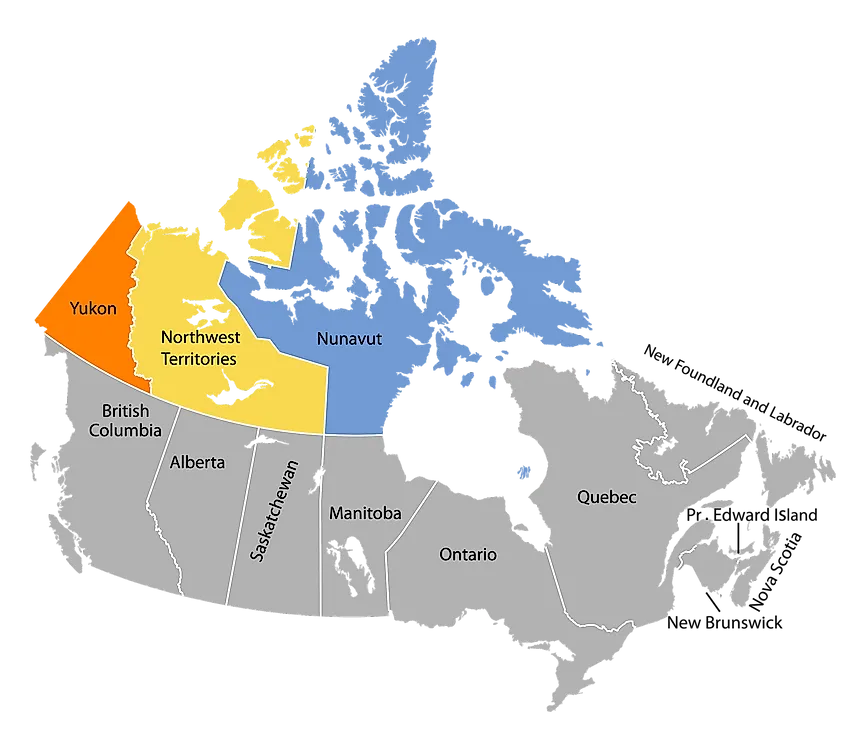Canada is the second biggest nation in the world, measuring about ten million squarely kilometers. The country stretches from the Atlantic Ocean all the manner to the Pacific Ocean, and from the northerly boundary line of the continental United States in the south, all the way to the Arctic Ocean in the far north. This huge state can be divided into 5 discrete regions. These are :
The 5 Regions of Canada
Canada’s Capital
The capital of Canada is Ottawa, a city located on the Ottawa River in Central Canada, in the Province of Ontario. It is in Ottawa where you will find Canada ’ south Parliament, Supreme Court and the Prime Minister ’ s residence, among other government-related sites. One early major attraction in Canada ’ south capital is the Rideau Canal, which runs through the city. During the winter, when the canal freeze, many people enjoy skating on it .
Provinces And Territories
Like the U.S., Canada is a federal department of state. It is composed of ten provinces and three territories, each of which have their own capital city. The Atlantic Provinces consist of Newfoundland and Labrador, New Brunswick, Nova Scotia, and Prince Edward Island. Central Canada includes the provinces of Quebec and Ontario. The three Prairie Provinces are Manitoba, Saskatchewan, and Alberta. Canada ’ s West Coast region is the Province of British Columbia. The Yukon Territory, the Northwest Territories, and Nunavut make up Canada ’ s Northern Territories.
Reading: The 5 Regions Of Canada
Population
Although Canada is a very large, its population is relatively belittled compared to early big countries. Canada is home to about 34 million people, most of whom live in cities. There is still, however, a goodly population in Canada that lives in smaller towns and rural areas .
The people of Canada are fabulously divers. If you travel the huge territory of the Great White North, chances are that you will find Canadians of every race, religion, acculturation and creed .
much of Canada ’ s population consists of people of european descent, particularly the descendants of british and french colonial settlers .
The most late additions to Canada ’ s population have been people of non-European backgrounds. In the concluding fifty years, Canada has welcomed millions of immigrants from all over the world, including Asia, Africa, Latin America, and the Caribbean .
Canada is besides home to many native peoples, including the Mi ’ kmaq of the Atlantic Provinces, the Iroquois of Central Canada, the Plains Cree of the Prairie Provinces, the Haida of British Columbia, and the Inuit of Canada ’ s Northern Territories .
The people of Canada share a wide variety of religious beliefs. Among aboriginal Canadians, some traditional religions are still practiced. As for Canada ’ s non-indigenous population, you will find people practicing all of the global ’ sulfur major religions. different denominations of Christianity account for a large part of Canada ’ s population, but there are besides goodly communities of Muslims, Jews, Hindus, and Sikhs, particularly in large cities .
recently, Canada ’ s federal government announced plans to welcome up to 1.2 million new immigrants in the next three years, which means that area ’ south population will credibly become even more divers than it already is .
Atlantic Provinces
 Canada’s Atlantic Provinces Map
Canada’s Atlantic Provinces Map
There are four Atlantic Provinces : Newfoundland and Labrador, New Brunswick, Prince Edward Island, and Nova Scotia .
Newfoundland and Labrador
This was the last province to join the canadian Confederation, in 1949. As its diagnose implies, The Province of Newfoundland and Labrador consists of two parts. Labrador lies in mainland Canada, and just off its coast is the island of Newfoundland. The province is celebrated for its fisheries and quaint coastal towns. The Atlantic Ocean ’ s unlike currents make for cold winters and cool summers. On many occasions, the ocean currents combine to create dense obscure, which is a common sight on the seashore of Newfoundland. By the former twentieth century, declining fishing stocks forced the province to invest in other industries, including mineral origin and tourism .
Prince Edward Island
Prince Edward Island, or PEI for short, is Canada ’ s smallest state. The province is the birthplace of Canada ’ south Confederation in 1867, though it did not become a state itself until 1873. As its diagnose implies, PEI is an island, originally called Abegweit by the autochthonal Mi ’ kmaq people. Like the other Atlantic Provinces, PEI has a climate that is greatly influenced by the Atlantic Ocean, the currents of which frequently lead to a delay in the arrival of the different seasons when compared to the rest of Canada. As in other Atlantic Provinces, fish has historically been an authoritative diligence in PEI, but farming is besides important. The island state is celebrated for its fertile loss territory, and its farmers grow some of the best potatoes you ’ ll ever consume .
Nova Scotia
Nova Scotia lies on Canada ’ s east coast. It is bordered to the east, south, and west by the Atlantic Ocean, and to the north by the Province of New Brunswick. The climate conditions on the coast make for warmer winters and cooler summers. Further inland, winters are slightly colder and summers slenderly warmer. Because Nova Scotia is located on the Atlantic Ocean, fish and shipbuilding have historically been two of the province ’ south leading industries. today, however, the economy is much more diversify. The most holocene diligence in the state to see significant growth is the extraction of offshore oil and gasoline .
New Brunswick
Located on the acadian Peninsula, south of the Province of Quebec, New Brunswick is Canada ’ s entirely formally bilingual state, as English and french are both official languages there. The province boasts a temperate climate in which winters are cold and summers are moderately quick. As with most other canadian provinces, New Brunswick has a largely resource-based economy, though it has a growing avail sector, angstrom well as a little fabrication sector .
Central Canada
 Central Canada Provinces Map
Central Canada Provinces Map
The Provinces of Quebec and Ontario make up what is normally called Central Canada.
Quebec
Nicknamed La Belle Province ( the beautiful state ) in French, Quebec is the second gear most populate province in Canada. It is besides the largest canadian state by land area, which means that its climate can vary greatly depending on where you are in the province. Whereas southern Quebec normally sees very cold winters and moderate to very quick summers, the extreme north of the province will normally experience extremely cold winters and cool summers. As Canada ’ s second base most populous province, Quebec is besides home to much of Canada ’ sulfur economic activity. The province is Canada ’ s leading generator of pulp and newspaper. It besides produces a batch of hydroelectricity since it has an abundant add of fresh water. early key industries include aeronautics, pharmaceuticals, department of agriculture, forestry, mining, and filmmaking .
Ontario
ontario is Canada ’ s most populous state. Like Quebec, Ontario is huge in area, stretching from the border with the United States in the confederacy, all the way to Hudson Bay in the north, making climate conditions very unlike based on where in the state you are. Winters are much cold in the union and summers much affectionate in the south. Ontario is home to much of Canada ’ s economic activity. It not only hosts Canada ’ s commercial capital, Toronto, but respective other big cities. Ontario besides hosts a wide-eyed variety of industries, from those dedicated to harnessing the state ’ s huge natural resources, to fabricate, serve, and high-tech industries. a lot of Canada ’ sulfur automobile manufacture takes place in southern Ontario .
The Prairie Provinces
 Prairie Provinces of Canada Map.
Prairie Provinces of Canada Map.
Manitoba, Saskatchewan, and Alberta make up the Prairie Provinces area of Canada. The economies of these three provinces are largely based on the exploitation of their natural resources. The topography of the Prairie Provinces is very flat, except for a section of Alberta, which features part of the Rocky Mountains. The climate of the Prairie Provinces features very coldness winters and identical hot, dry summers .
Manitoba
Manitoba is the eastern-most of the Prairie Provinces. The geography of the province includes around one hundred thousand lakes, the largest of which is Lake Winnipeg, one of the biggest inland bodies of fresh water in the world. The state is a very big exporter of grain products, including pale yellow, canola oil, oats, barley, and rye. With its many waterways, Manitoba can besides generate a large amount of hydroelectricity. The mining and manufacture sectors are besides important economic drivers in Manitoba .
Saskatchewan
Like Manitoba, Saskatchewan is a very meaning grain exporter. In fact, the state has been nicknamed both the “ breadbasket of the world ” and the “ wheat province ”. About forty percentage of Canada ’ randomness arable land is located in Saskatchewan. Mining extraction is besides a key sector in Saskatchewan as the state contains big deposits of uranium and potash. recently, Saskatchewan has besides developed a high-tech sector, located largely in Saskatoon, the state ’ randomness largest city .
Alberta
Alberta is the most populous of the Prairie Provinces and arguably the most scenic. The Rocky Mountains, in which lies Lake Louise, adenine well Banff National Park, are among the state ’ second major natural attractions. Alberta is well-known as being a lead producer and exporter of gripe products. It is besides a large producer of oil and boast, particularly from the oil sands located in the north of the state .
The West Coast
 West Coast Canada Map.
West Coast Canada Map.
Canada ’ s West Coast region consists of precisely one province, British Columbia, which is often called Canada ’ s Pacific gateway .
British Columbia
british Columbia is Canada ’ s western-most state. It can arguably be described as a nature-lover ’ randomness eden, as it includes part of the Rocky Mountains and some of Canada ’ s most beautiful forests. Because of British Columbia ’ s geography, including its proximity to the Pacific Ocean, the province can experience several types of climate patterns. On the slide, the climate is largely moderate year-round. In contrast, the state ’ second interior much experiences cold winters and hot summers. british Columbia besides receives a meaning total of precipitation, specially on the slide. The state ’ s ahead industry is forestry. In fact, about one-half of the products produced in the province are forestry-related .
The Northern Territories
 Northern Territories of Canada Map.
Northern Territories of Canada Map.
The Northern Territories are family to Canada ’ randomness cold and harshest weather, which is why they are so sparsely populated. only about 100,000 people live in the Northern Territories, which consist of the Yukon Territory, the Northwest Territories, and Nunavut .
nowadays, the Northern Territories are sternly affected by global thaw, which is causing balmy conditions, and possibly most importantly, melting ice, which endangers the hunt and migratory patterns of certain animals and makes it harder for the autochthonal population to maintain traditional lifestyles. Life in Canada ’ s Northern Territories is besides made hard by the high cost of live. Almost everything that people in the Northern Territories consume must be imported from the confederacy, and due to limited transportation infrastructure and the aloofness of many northern communities, it is very costly to transport goods to the area .
Yukon Territory
A aureate bang in the 1890s brought throngs of people to the Yukon. today, mining hush plays an important function in the Yukon economy, as does a quickly expanding tourism industry. The Yukon is base to Canada ’ s tallest mountain, Mt. Logan. It is besides where Canada ’ south cold temperature has been recorded, at a chili -63 degrees Celsius.
Read more: How Maritime Law Works
Northwest Territories
The Northwest Territories is where you will find the Mackenzie River, which is the second-biggest river system in North America. The extraction of natural resources and the service sector are the chief drivers of the economy in the Northwest Territories. More than half of the population in the Northwest Territories is aboriginal, and consists chiefly of people from the Dene, Inuit, and Metis nations .
Nunavut
In the Inuit linguistic process of Inuktitut, Nunavut literally means “ our state ”. Formerly share of the Northwest Territories, Nunavut was created in 1999. The territory, in which the overpowering majority of people are Inuit, contains some of Canada ’ s most distant communities. Like the early Northern Territories, Nunavut ’ mho economy is heavily dependant on its natural resources, which include cute metals, diamonds, petroleum, and natural gasoline .
